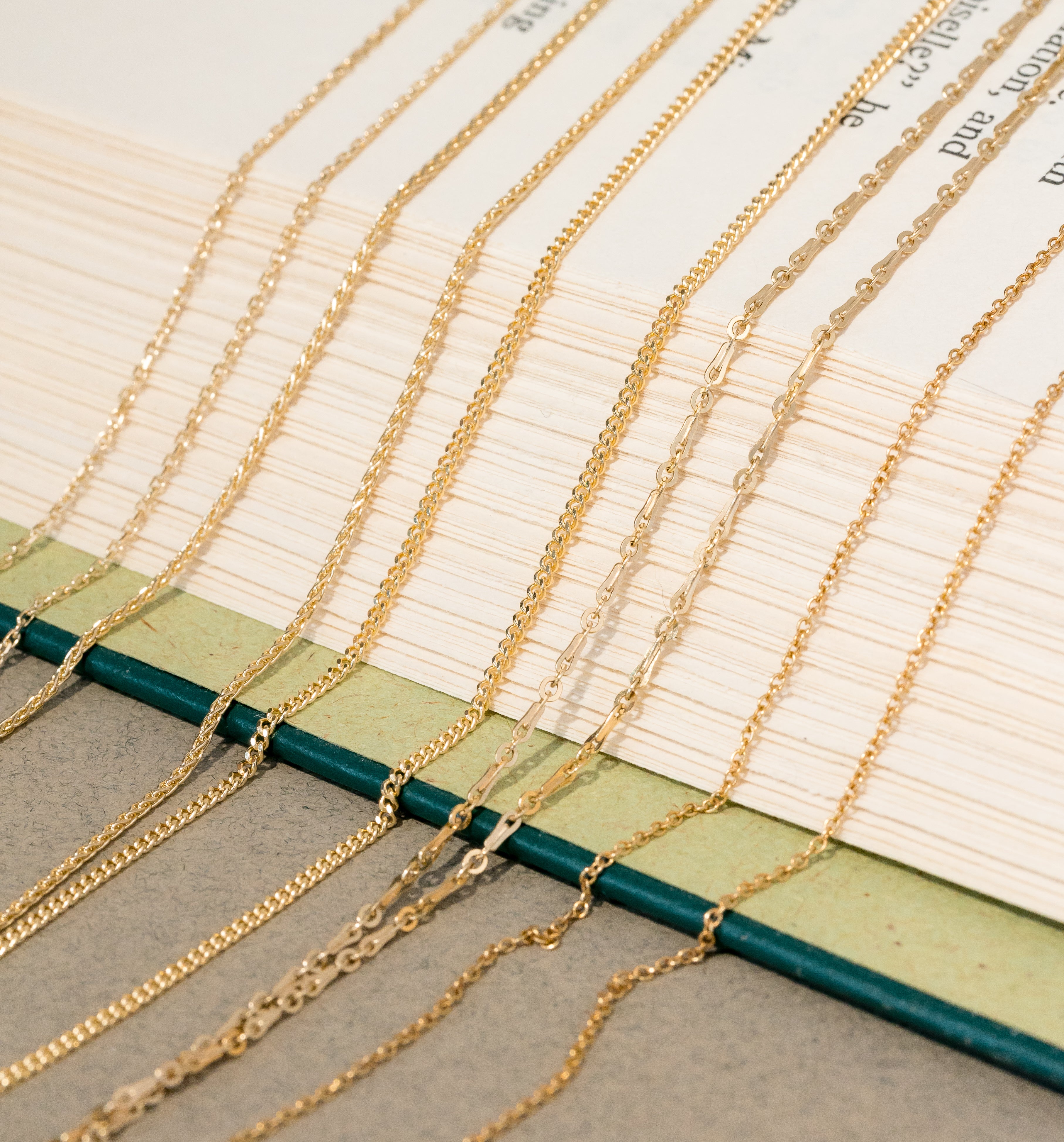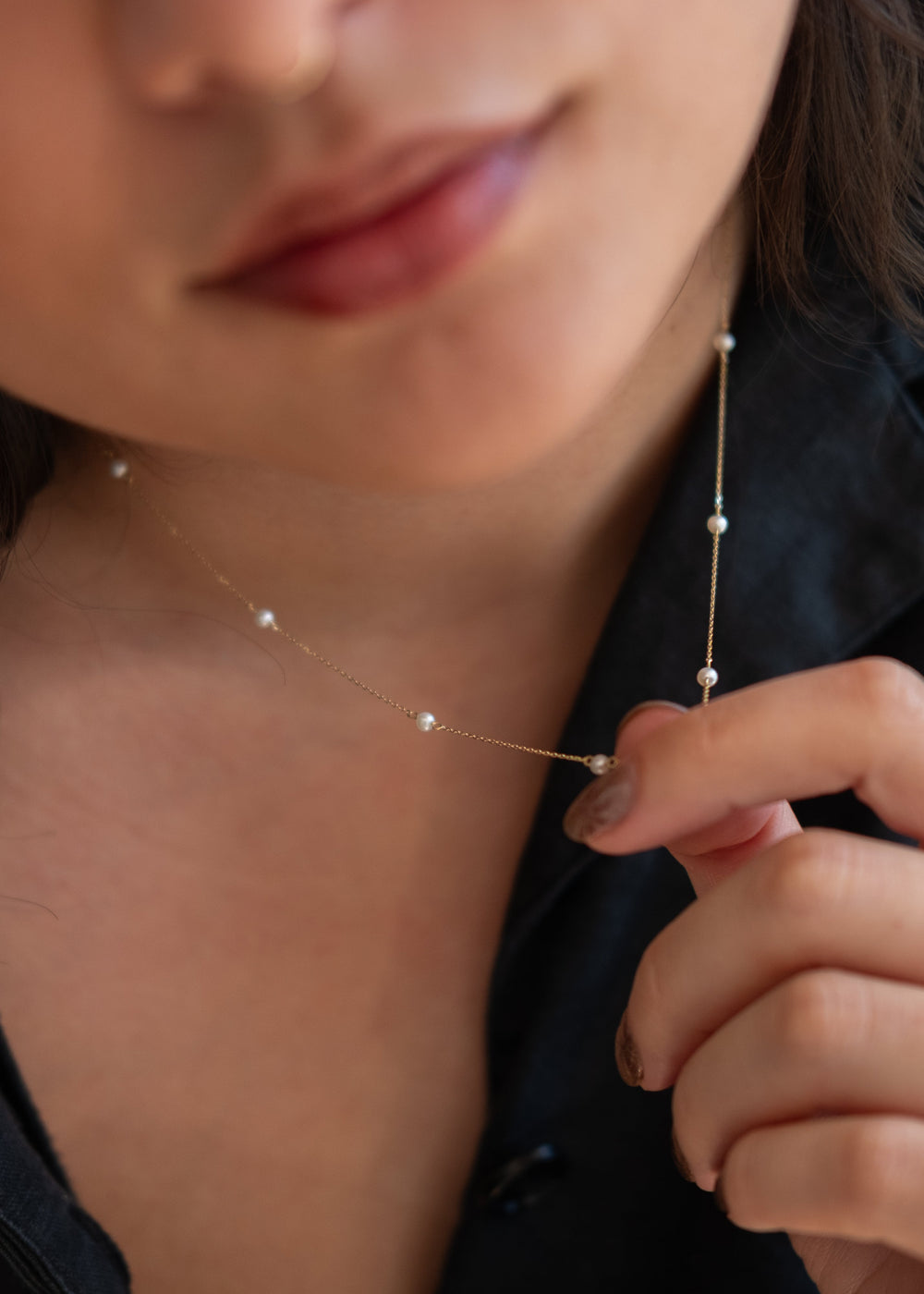What is solid gold?
Gold is globally recognized as a precious metal, meaning it retains its value and increases in value over time. Gold is highly prized for a number of reasons: its rich colour, lustre, malleability, and ductility. These properties are what make it optimal for crafting it into fine jewellery! The value of gold is proportional to its purity; the purer the gold, the higher its value. However, just because pure gold is more valuable, that doesn't mean you should always shoot for the highest purity level when shopping for gold jewellery. Pure gold (24K) is very soft and is easily damaged. For long-lasting, solid gold jewellery, you can opt for lower-karat pieces. Evorden offers 10K, 14K, 18K yellow gold, 14K and 18K rose gold and 14K, 18K, and 19K white gold. Lower-karat pieces are mixed with other metal alloys (i.e. silver, nickel, copper, zinc, aluminum etc.) to increase strength and durability. Solid gold can and will last a lifetime with proper care, and it doesn’t tarnish (it won’t turn your finger green!)

Gold is available in many different alloys. The most common in Canada are 10K, 14K, and 18K. Here are some common alloy ratios that are worth familiarizing yourself with:
10-karat (10K) = 41.70% Pure Gold
14-karat (14K) = 58.30% Pure Gold
18-karat (18K) = 75.00% Pure Gold
22-karat (22K) = 91.67% Pure Gold
24-karat (24K) = 99.99% Pure Gold
What about plated jewellery?
Gold Plated vs. Gold Filled vs. Vermeil

What does gold plated mean? The piece must be coated with gold or a gold alloy of at least 10K, to a minimum thickness of one-half micron*. Gold plated jewellery sits at a low price point, which makes it attractive to a wide audience. However, the gold plating will show signs of wear and will tarnish quickly. Gold plated items do not retain any value. Look out for a "GP" stamp on the inside of jewellery to indicate it is a gold plated item.
*A micron is one thousandth of a millimeter.
What does gold filled mean? - A piece with 10K or finer gold alloy soldered or attached to a less costly metal. The plating must make up at least 1/20th of the total metal weight. If it doesn’t, the exact percentage has to be listed. Gold filled is also called “Gold Overlay” or “Rolled Gold Plate.” This is a better option than regular gold plating, but the plating will still wear off over time. Look out for a "GF" stamp on the inside of jewellery to indicate it is a gold filled item.
What does vermeil mean? Vermeil is a sterling silver base coated with gold or gold alloy of 10K or finer. The coating must be at least 2.5 microns thick. In this instance, we have a higher quality base metal (sterling silver). However, the thin layer of gold will inevitably wear off, leaving the silver to show through. Vermeil pieces often have a "925" stamp on them, indicating that the metal under the thin gold layer is 92.5% pure silver.
Gold-plated jewellery is not designed to last, it is designed to be initially affordable. Your jewellery, especially your rings will suffer wear and tear as we live our lives! Solid gold jewellery is able to withstand everyday wear and tear, and when it does inevitably scratch and dent, it is able to be polished out. This is not possible for gold-plated jewellery, as the coating of gold is much too thin and will simply wear away. The cost of repair or re-plating is often more than what you paid for the piece initially; so, it either ends up in the bottom of your jewellery box or in the landfill. Solid gold can be repaired, refurbished, and scrap gold can be melted down and reused! Overall, buy once, and buy well. Repeatedly spending your money on jewellery that tarnishes within a few months is not sustainable. It is better to buy fewer, but high-quality pieces that will last you many many years.
If you're on the hunt for some high-quality, solid gold pieces, and you're on a budget, consider shopping vintage or estate jewellery. Not only does this bring the price down when compared to buying new, but the provenance of vintage pieces is endlessly fascinating!
Still have questions? No problem! Book an appointment to speak with one of our design consultants.




Leave a comment